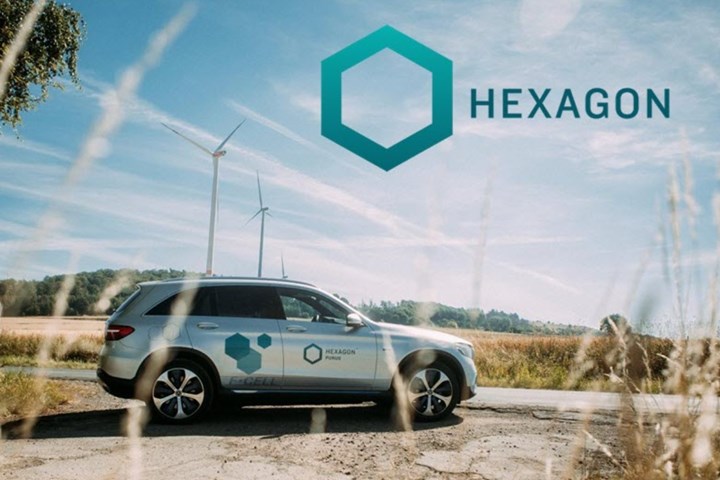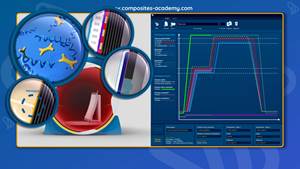Hexagon Composites initiates Hexagon Purus spin-off and private placement
Hexagon considers the intended separation as an important step for strengthening both Hexagon’s g-mobility and e-mobility (Hexagon Purus) businesses.

Photo Credit: Hexagon Composites ASA
Hexagon Composites ASA (Hexagon, Alesund, Norway) recently announced that the Board of Directors has initiated a process with the intention to spin-off and list Hexagon Purus (Alesund) separately as an independent company.
In preparation for “the spin-off,” the Board of Directors has retained Carnegie AS and Skandinaviska Enskilda Banken AB (SEB) as joint bookrunners (together, the managers) to advise on and effect an undocumented private placement to raise proceeds of up to $800 million NOK, representing approximately 8.5% of the outstanding capital of the Hexagon at current share price levels. The private placement will be directed towards Norwegian and international investors after the close of Oslo Stock Exchange.
Comprised of solutions across the clean fuels’ spectrum, Hexagon Composites’ business is organized into low emission gas mobility solutions (g-mobility) and zero emission hydrogen and battery electric mobility solutions (e-mobility). According to the company, the private placement will allow the e-mobility business to be listed with the required capital to fund its initial development phase, as well as support general corporate purposes within g-mobility. The intention is that a portion of the shares in Hexagon Purus will be distributed to Hexagon’s shareholders in connection with a separate listing, with Hexagon retaining majority ownership after the distribution.
Hexagon plans to remain a significant long-term owner in Hexagon Purus to support and develop customer and shareholder value.
The spin-off is intended to be completed before the end of 2020, following the transfer of Hexagon Purus’ CNG LDV business to Hexagon’s g-mobility business.
Hexagon also considers the intended separation as an important step for strengthening both Hexagon’s g-mobility and e-mobility (Hexagon Purus) businesses. The spin-off will reportedly unlock further value from an industrial and financial perspective by creating two focused companies, each with its own strategic agenda and investment story. The separation will also allow the two businesses to have individual strategies for future funding, capital allocation and dividend policy.
After the intended spin-off, Hexagon says it will be a g-mobility-focused company with attractive profitability and an array of longer-term growth opportunities, targeting several initiatives to drive low-emission fuel adoption. Differently, Hexagon Purus will be a pure-play hydrogen and battery electric e-mobility company positioned to benefit from the tremendous growth that is expected in the e-mobility market, with the following key highlights:
- In pole position to benefit from game-changing market opportunities for hydrogen and battery electric solutions globally driven by the ongoing Environmental, Social and Corporate Governance (ESG) push towards a zero-emission society.
- Global leader in Type IV cylinders, an enabling technology for hydrogen mobility, set to accelerate growth in an addressable market that is expected to reach about $7 billion USD in 2030.
- Unique hydrogen and battery systems as well as electric drivetrain integration capabilities meeting OEM standards.
- Strong customer relationships —notable early successes with major OEMs in North America, Europe and Asia.
- Established manufacturing footprint with serial production and Tier 1 supply capabilities.
- Positioned for significant growth with record-high activity and substantial expansion potential in China through announced partnership with CIMC ENRIC company.
“Decarbonization is high on the global agenda. Governments have launched ambitious plans to decarbonize; many industries face strict targets for reducing emissions and the renewable energy required to make green hydrogen is growing more plentiful. In this global push to decarbonize, we see unprecedented opportunities for hydrogen and battery electric solutions,” says Jon Erik Engeset, CEO Hexagon.
The spin-off is intended to be completed before the end of 2020, following the transfer of Hexagon Purus’ CNG LDV business to Hexagon’s g-mobility business (reference is made to the stock exchange release on August, 19, 2020 announcing the transfer). A portion of the shares in Hexagon Purus is expected to be distributed to existing Hexagon shareholders as a part of the intended listing of Hexagon Purus, with Hexagon remaining the majority shareholder committed to supporting Hexagon Purus industrially on its continued growth journey. After the completion of the spin-off, the intention is to apply for Hexagon Purus’ shares to be admitted for trade on the Merkur Market, a multilateral trading facility operated by the Oslo Stock Exchange.
The Private Placement
According to Hexagon Composites ASA, the price in the private placement will be determined through an accelerated book building process. The minimum application and allocation amount have been set to the NOK equivalent of $100,000 EUR. Hexagon says it may however, at its sole discretion, allocate an amount below $100,000 EUR to the extent applicable exemptions from the prospectus requirement pursuant to applicable regulations, including the Norwegian Securities Trading Act and ancillary regulations, are available.
The book building period for the private placement opened on August 25, 2020. The new shares to be issued in connection with the private placement were issued based on a Board authorization granted by Hexagon’s general meeting held April 20, 2020. The new shares allocated in the private placement are expected to be settled through a delivery versus payment transaction on a regular T+2 basis by delivery of existing and unencumbered shares in Hexagon that are already listed on the Oslo Stock Exchange pursuant to a share lending agreement between the managers, the company and Flakk Composites AS. The shares delivered to the subscribers are thus expected to be tradable upon delivery.
Hexagon has considered the private placement in light of the equal treatment obligations under the Norwegian Securities Trading Act and Oslo Børs' Circular no. 2/2014. The company is of the opinion that the waiver of the preferential rights inherent in a private placement is, taking into consideration the time, costs and expected terms of alternative methods of securing the desired funding, in the common interest of the shareholders of the company.
Related Content
SAMPE launches 2026 Emerging Engineers Challenge
Early-career engineers are invited to submit design concepts by Dec. 8, focused on enhancing a manufacturing process using advanced materials, robotics, data analytics or machine learning.
Read MoreNew online training course targets prepreg basics
JEC World 2024: Composites Expert highlights how its E-Learning Composites Academy platform supports flexible industry learning with new courses developed with Stelia Aerospace North America.
Read MoreDaher inaugurates Learning Center for training aeronautical talent
Daher offers a concrete solution to the shortage of qualified professionals in aerospace, providing a range of technical programs that prepare workers for the sector’s rigorous demands.
Read MoreGMI Aero equipment supports Lufthansa Technical Training courses
Equipment like the Anita 4.0 and Leslie machining toolkit are now being included in Lufthansa’s aerospace-focused composites repair training courses.
Read MoreRead Next
Cutting 100 pounds, certification time for the X-59 nose cone
Swift Engineering used HyperX software to remove 100 pounds from 38-foot graphite/epoxy cored nose cone for X-59 supersonic aircraft.
Read MoreScaling up, optimizing the flax fiber composite camper
Greenlander’s Sherpa RV cab, which is largely constructed from flax fiber/bio-epoxy sandwich panels, nears commercial production readiness and next-generation scale-up.
Read MoreNext-gen fan blades: Hybrid twin RTM, printed sensors, laser shock disassembly
MORPHO project demonstrates blade with 20% faster RTM cure cycle, uses AI-based monitoring for improved maintenance/life cycle management and proves laser shock disassembly for recycling.
Read More


























